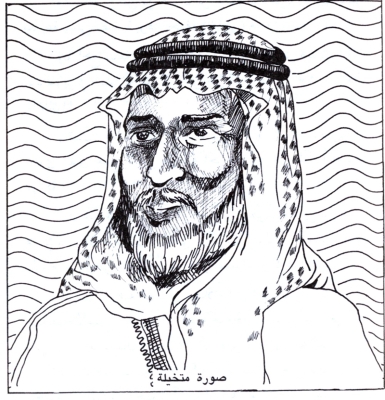
Othman Bin Abdulrahman al-Mudaifi al-Adwani was the governor of Taif and Hejaz during the era of the First Saudi State and one of its prominent military leaders. He spent eleven years leading the armies of the Saudi State in the western Arabian Peninsula, successfully bringing its towns and tribes under Saudi rule.
Lineage and life of Othman al-Mudaifi
Othman al-Mudaifi belonged to the Adwan tribe. Historical sources do not provide details about his childhood or his exact birth date, except that he was born in the Najd region in the eighteenth century. His father was one of the prominent figures of the tribe, while his mother’s lineage traced back to the Asmah branch of the Otaibah tribe. He grew up in areas inhabited by the Adwan tribe near Taif, displaying intelligence, bravery, and strong leadership qualities, which enabled him to become the leader of his tribe. Al-Mudaifi worked with Sharif Ghalib Bin Musaed, the governor of Makkah al-Mukarramah, and earned the title al-Mudaifi because he served as the minister of Sharif Ghalib’s private affairs. He was highly competent both administratively and as a leader and later married the sister of Sharif Ghalib Bin Musaed.
Othman al-Mudaifi’s joining of the First Saudi State
Othman al-Mudaifi joined the First Saudi State during the reign of Imam Abdulaziz Bin Mohammed Bin Saud after being influenced by its principles. In 1802, he traveled to Diriyah and pledged allegiance to the imam, who then appointed him as the governor of Taif and Hejaz. He sent messages to tribal leaders informing them of his appointment and requesting their loyalty, assistance, and allegiance to Al Saud, which they accepted. After aligning with Saudi rule, al-Mudaifi settled in al-‘Abayla Village, making it the base for his military operations. Many tribes of Hejaz joined him, declaring their defection from the rule of the Ashraf.
Al-Mudaifi led the army of the First Saudi State in Hejaz and successfully seized control of Taif and its surrounding towns. He called upon tribes to join his cause, leading to the incorporation of Taif and the Hejaz tribes under Saudi rule. He continued his efforts to pressure Sharif Ghalib, the governor of Makkah al-Mukarramah, with support from Abdulwahab Abu Nuqta, the governor of Aseer, and Salim Bin Shakban, the governor of Bishah. Eventually, Sharif Ghalib was forced into reconciliation and pledged allegiance to Saudi rule. However, Sharif Ghalib later broke his agreement and allied with the forces of Mohammed Ali Pasha to overthrow the First Saudi State. In response, Saudi forces under al-Mudaifi’s command withdrew beyond Taif. Despite this setback, al-Mudaifi refused to surrender and continued to resist on the outskirts of Taif. After several consecutive battles, he was eventually captured east of Taif while defending Saudi territories. Following his capture, Imam Saud Bin Abdulaziz sent envoys to Mohammed Ali Pasha in Jeddah, offering 100,000 French riyals as ransom for his release. However, before negotiations could be concluded, al-Mudaifi was sent to Istanbul, where he was executed in 1813.
Related quizzes
Related articles


